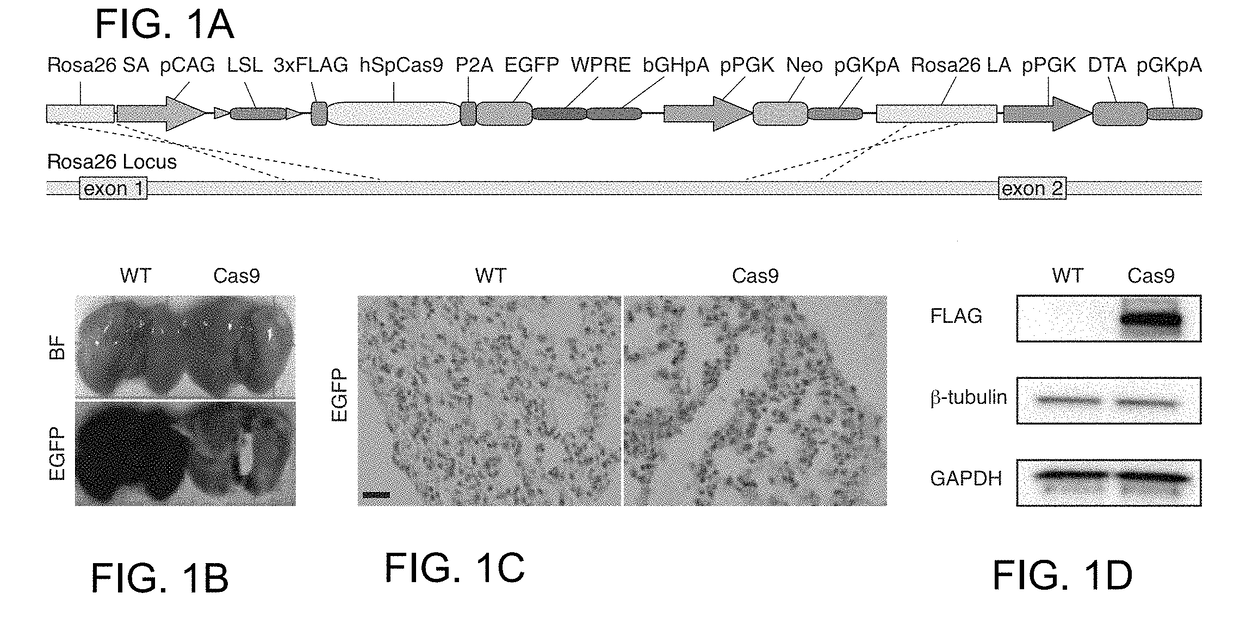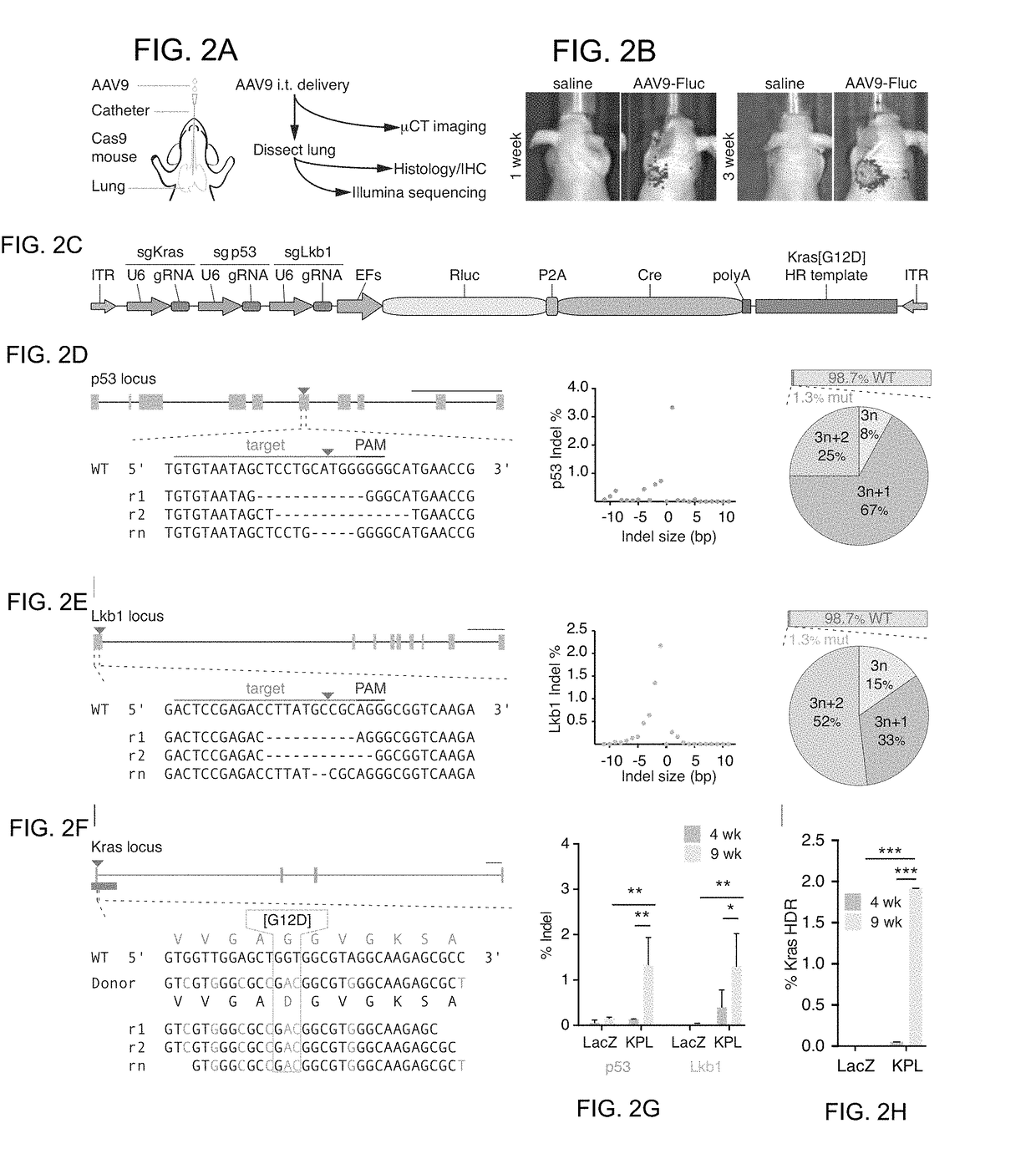Delivery, use and therapeutic applications of the crispr-cas systems and compositions for modeling competition fo multiple cancer mutations in vivo
- Summary
- Abstract
- Description
- Claims
- Application Information
AI Technical Summary
Benefits of technology
Problems solved by technology
Method used
Image
Examples
example 1
sgenic and Knock in Mice
[0153]Reference is made to WO 2014 / 093622 (PCT / US13 / 74667), incorporated herein by reference. To generate a mouse that expresses the Cas9 nuclease Applicants submit two general strategies, transgenic and knock in. These strategies may be applied to generate any other model organism of interest, for e.g. Rat. For each of the general strategies Applicants made a constitutively active Cas9 and a Cas9 that is conditionally expressed (Cre recombinase dependent). The constitutively active Cas9 nuclease is expressed in the following context: pCAG-NLS-Cas9-NLS-P2A-EGFP-WPRE-bGHpolyA. pCAG is the promoter, NLS is a nuclear localization signal, P2A is the peptide cleavage sequence, EGFP is enhanced green fluorescent protein, WPRE is the woodchuck hepatitis virus posttranscriptional regulatory element, and bGHpolyA is the bovine growth hormone poly-A signal sequence. The conditional version has one additional stop cassette element, loxP-SV40 polyA×3-loxP, after the prom...
example 2
Competition of Multiple Cancer Mutations In Vivo Using a Conditional CRISPR-Cas9 Mouse
[0159]The genomes of cancer cells encompass complex combinations of genetic lesions (Weinberg 2007). These genetic lesions usually include oncogenic gain-of function mutations, as well as loss-of-function (LOF) mutations that inactivate tumor suppressor genes (Garraway and Lander 2013). Large-scale cancer sequencing efforts have identified several common oncogenic mutations, such as Kirsten rat sarcoma viral oncogene (KRAS) and epithelial growth factor receptor (EGFR) (Govindan et al. 2012; Lawrence et al. 2013). Tumor suppressor genes that are significantly mutated in human cancers are on the order of dozens to hundreds in various patient cohorts, with the most common being tumor protein p53 (TP53 or P53), phosphatase and tensin homolog (PTEN), and serine / threonine kinase 11 (STK11, LKB1) (Govindan et al. 2012; Ji et al 2007; Lawrence et al. 2013). The genome of a sequenced tumor often encompasses...
PUM
 Login to View More
Login to View More Abstract
Description
Claims
Application Information
 Login to View More
Login to View More - R&D
- Intellectual Property
- Life Sciences
- Materials
- Tech Scout
- Unparalleled Data Quality
- Higher Quality Content
- 60% Fewer Hallucinations
Browse by: Latest US Patents, China's latest patents, Technical Efficacy Thesaurus, Application Domain, Technology Topic, Popular Technical Reports.
© 2025 PatSnap. All rights reserved.Legal|Privacy policy|Modern Slavery Act Transparency Statement|Sitemap|About US| Contact US: help@patsnap.com



